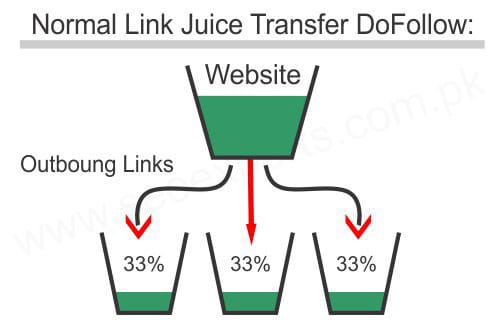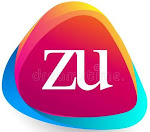21 Things to Know About Backlinks
Introduction
This article is specifically designed for those content writers who love to write content for blogs and websites. Writing high-quality content for blogs and websites needs backlink support to generate high organic traffic and get a good position in search engine ranking. So in this article/blog, you will be able to learn and know about the types of links and backlinks required for SEO.
Website
· Website refers to a collection of web pages and related content that is identified by a common domain name and published on at least one web server.
· Websites are designed to sell products or services online.
Website traffic
· Website traffic refers to web users who visit a website.
· Website traffic is measured in visits or sessions.
· Website traffic is a common way to measure online business effectiveness in attracting an audience.
Search engine
· A search engine refers to a web-based tool that enables users to locate information on the www.
· A search engine is a software system designed to carry out web searches. They search the www in a systematic way for particular information specified in a textual web search query.
· Search engines act as filters for the wealth of information available on the internet.
· Some popular search engines are Google, Yahoo, MSN, Bing, Ask.com, and Baidu.
Search engine ranking
Search engine ranking refers to the spot a URL takes on the results page of a search engine.
Link authority
· Link authority refers to an indicator of the ranking power a link carries over.
· The higher the link authority the better is the article.
DA
· DA was created by software development company MOZ.
· DA stands for domain authority.
· DA refers to a search engine ranking score that gives a measure of how successful a site is when it comes to search engine results.
· DA usually gives an overview of likely search engine performance.
PA
· PA stands for page authority.
· PA refers to the value a search engine assigns a webpage.
· The higher the value of PA, the more likely the search engine will return a webpage early in organic search results.
SEO
· SEO stands for Search engine optimization.
· SEO refers to the brand of digital marketing that focuses on improving organic traffic.
· SEO is an array of methods and techniques used to help a given page organically appear higher in the SERP of Google or other search engines.
Backlinks
· Backlinks are also called inbound links as they represent another website’s traffic coming to your own site.
· Backlinks refer to hyperlinks pointing from one webpage to another webpage.
· Backlinks are assessed through quantity and quality, and more links may potentially lead to more authority.
Importance of relevant backlinks
Backlinks on your website help search engines analyze popular web pages and provide the site’s trustworthiness and a page’s overall authority. High-quality, relevant, and authoritative backlinks are often required for more and better traffic to your website from search engines and the potential for leads.
High-quality backlink
· A high-quality backlink refers to a backlink that is natural, highly reputable, and highly relevant.
· High-quality backlinks are do-follow backlinks with the body text of a page on a high-quality website that is relevant to your topic that points to a page on your website.
· A high-quality backlink comes from a high domain authority website that is well-trusted by search engines and searchers alike.
· High-quality backlinks use relevant keywords within the anchor text of the links.
Do follow backlink
· Do follow backlink refers to a backlink that points back to your website or blog for Google and other search engines to crawl.
· A do-follow backlink helps in terms of SEO bypassing the authority of the original site to the destination site.
· Do follow backlink helps improve a website’s domain authority or domain rating.
· Do-follow backlinks help Google and other search engines discover your content for faster indexing and ranking.
No-follow backlink
· No-follow backlink refers to a backlink that doesn’t pass authority on to the website it is linking to.
· No-follow backlink is a setting on a web page hyperlink that directs search engines not to use the link for page ranking calculation.
· No-follow backlinks help to drive traffic, boost SEO, and leverage social signals and influencer marketing.
Profile backlink
· Profile backlink refers to the combined backlinks to a website, in an abstract way.
· A profile backlink is a portfolio of links from all the sites that link to your site.
· A profile backlinks contain links from authoritative sites, social media platforms, no-follow links, and spam links.
· A profile backlink links your website URL as part of personal or professional profiles on high-ranking platform applications, and websites such as Twitter, Facebook, Instagram, and WordPress.
External links
· External links refer to a link that points to an external domain.
· In SEO, external links are the most important source of high-position ranking.
· External links are considered as the third-party votes by the search engine.
High PR (Public Relations) backlink
· High PR backlink refers to the link to your website from a website that has a high level of authority or page rank.
· High PR backlinks are considered to be the most powerful type of backlinks.
Low PR backlinks
· Low PR backlinks refer to backlinks from websites with low traffic and low engagement.
· Low PR backlinks usually don’t add much value to your website.
Toxic backlink
· Toxic backlinks refer to backlinks that commonly show signs of low quality or an attempt to manipulate rankings.
· Toxic backlinks are coming from sites that have been set up only for the purpose of linking out.
· Toxic backlinks are coming from sites and content which aren’t topically relevant.
· Toxic backlinks are coming from sites that aren’t indexed by Google.
· Toxic backlinks are coming from spammy sites, paid link mills, forums or blogs or comment links, and sponsored links.
Broken link
· Broken link refers to a webpage that can’t be found or accessed by a user for various reasons.
· Broken link is a hyperlink to a website that is linked to an empty or non-existent external webpage.
· When a broken link is clicked, an error message is displayed.
· A broken link has no object or doesn’t lead to anything.
Dead link
· Dead link is also called an orphan link.
· Dead link refers to a hyperlink on a website that points to a web page that has been deleted or moved.
Spam
· Spam refers to any kind of unwanted, unsolicited commercial messaging sent electronically to a wide audience.
· Spam is sent out in bulk via email to a random recipient list.
Link juice
· Link juice refers to the amount of positive ranking factor that a link passes from one page to the next.
· Link juice is the total amount of positive link metrics associated with a website as a whole.
· Link juice is a term used to describe and measure how much power a backlink passes onto another site and therefore strengthens it.
· Link juice helps to measure how people are discussing your content, website, and brand.
· Link juice helps to build brand awareness, build your reputation and establish yourself as a resource in your niche.














No comments:
Post a Comment